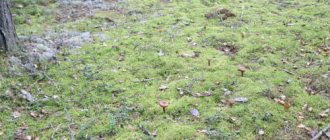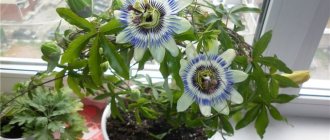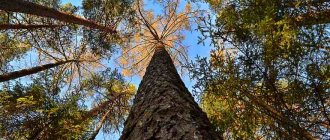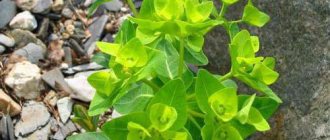Adonis vernalis
Spring adonis is a perennial plant 15-60 cm high from the ranunculaceae family. Grows in the steppes, on steppe slopes in the forest-steppe and steppe. Popularly it also has the following names: adonis (for its bright yellow flowers), hare grass, hare poppy, starodubka, mokhnatik, black grass, Montenegrin, yellow flower.
The international Latin name of the genus comes from the name of the mythical youth Adonis, who was distinguished by his extraordinary beauty. The specific name translated from Latin means “spring”.
What kind of plant is Adonis, description, photo
Starodubka, Goldenflower, Hare poppy, Kupavnik, Mohnatik, Hairy grass, Heart grass, Spring adonis from the Ranunculaceae family received its scientific name from a mythological youth named Adonis , who was posthumously transformed by the goddess Aphrodite into one of the most beautiful flowers on the planet. Aphrodite's lover was killed by a huge boar while hunting; the goddess could not survive the fact that he did not heed her warnings and went into the forest without her; at the site of the death of the handsome young man, flowers bloomed with colors (adonis).
There is an alternative version of the origin of the name adonis, as if it comes from the Phoenician sun god Adon, who is resurrected every spring.
With the onset of spring, somewhere in early April, in the steppe, among the meadows, on the slopes of the hills, Adonis spring adonis, amazing in its beauty and medicinal properties, begins to bloom ( see photo of the flower), which occupies a prominent place in the ancient health recipes of the Slavs.
The perennial medicinal plant Adonis vernalis grows up to 50-60 cm in height, the root of which does not die off, but produces new shoots every year; the flowers are yellow, the leaves are shaped like dill.
All parts of the Adonis plant are poisonous, so compliance with dosages is extremely important when using.
By the nature of the medicinal effect, the glycosides of spring adonis are similar to the cardiac glycosides of digitalis, but in comparison with them they do not accumulate in the body, they are also less active and do not produce such a long-lasting effect.
Adonis - what it looks like, photo
Adonis (genus Adonis, Ranunculaceae family) is a herbaceous perennial that is resistant to frost and weather disturbances. It is distinguished by its short, thick (3 cm) rhizome and root-cords of dark brown or brownish-black color.
In the spring, while the plant is blooming, the round, dense bare stem grows to about 20 cm in length, then continues to grow and by autumn reaches 30-40 cm. The stems are straight or deflected, simple or branched, covered with brown leaf scales below. As they grow, they form a curtain.
Sessile leaves are located throughout the stem; their plate is dissected into five narrow (0.5-1 mm) bare lobes, 1-2 cm long. The shape of the leaf along its contour resembles a wide (6-8 cm) egg at the base.
Bright yellow flowers, 4 to 6 cm in diameter, are produced at the top of a stem or branch. There are 10-12 elongated petals with jagged edges, their length is 2.5-3.4 cm. Leaves and flowers appear at the same time. The flowering period extends from April to May. In areas with cooler climates it can bloom until mid-June.
After flowering, a fruit 2 cm long is formed in the shape of a wide, tapering egg. It consists of small wrinkled nuts (30-40 pieces) with a hooked nose bent down. Full ripening of the seeds occurs in the first two months of summer.
The roots and herbaceous parts of the adonis are poisonous.
Adonis grows in steppes, forest-steppes, bush thickets, oak groves, forest edges, slopes of ravines in the central part of Russia and almost the entire territory of Siberia, on the Crimean peninsula. Outside these zones it is rare.
Medicinal properties of Adonis vernacular
- improved blood circulation;
- vasodilating properties;
- Adonis has immunostimulating properties that are useful for recovery from infectious diseases;
- regulates heart contractions;
- reduces convulsive manifestations, helps relieve agitation during psychosis;
- diuretic effect;
- contributes to the suppression of the cough center;
- improves pulmonary circulation in bronchial asthma;
- increases the vitality of the body;
- analgesic effect.
Indications for use
Adonis is prescribed for:
- cardiovascular diseases (coronary artery disease, hypertension, cardiomyopathies, vegetative neuroses);
- pulmonary diseases - bronchitis, pneumonia, bronchial asthma);
- nervous and mental diseases (epilepsy, hysteria, nervous exhaustion);
- renal pathologies (dropsy, cystitis, mild renal failure);
- colds and viral respiratory diseases;
- goiter, Graves' disease;
- rheumatic pain in joints and muscles.
The use of Adonis vernalis in folk medicine
The presence of cardiac glycosides in Adonis determines its therapeutic effect. The plant contains: cardiac glycosides, saponins, coumarins, alcohols, ascorbic and other acids, salts of magnesium, potassium, calcium, manganese, iron, tannins.
- Adonis is used for chronic circulatory failure, heart rhythm disturbances, coronary heart disease, hypertension, swelling of the legs, neurocirculatory and vegetative-vascular dystonia, functional disorder of the central nervous system (irritability, increased excitability, sleep disorders), alcohol and drug agitation, astheno-neurotic syndrome, epilepsy, neuroses, psychoses.
- As a result of the use of Adonis preparations, the following occurs: a decrease in shortness of breath, the disappearance of interruptions in the functioning of the heart, a decrease in swelling of the legs associated with heart failure. Blood pressure normalizes, headaches and dizziness decrease.
- Adonis vernacular herb, as a folk remedy, has long been used in the treatment of kidney diseases with symptoms of cardiovascular failure. Adonis is effective as a diuretic for kidney infections and urolithiasis.
- Suppression of the cough center gives scope for the use of adonis in the treatment of prolonged paroxysmal cough in whooping cough, pneumonia, and exacerbation of chronic bronchitis.
- Adonis helps with pain in joints, muscles, and rheumatic symptoms.
- A very pronounced effective therapeutic effect is obtained when taking adonis together with other plants containing cardiac glycosides - for example, lily of the valley.
- Reduces the toxic effect of hyperthyroidism on the heart muscle; for this, take Adonis herb in combination with budra, peppermint, oregano, violet, cucumber, calendula and chamomile flowers, equal amounts of all herbs, and three times more cold water, leave for a day, bring to a boil, immediately turn off, cool, consume 100 ml three times a day after meals.
- Used for glaucoma, hepatitis.
Adonis herb is used in traditional medicine recipes in the form of infusion and drops in alcohol.
Collection rules
For medicinal purposes, the spring adonis herb is used - the upper part of the plant, including leaves, stems, flowers and unripe fruits. It is best to collect it during the flowering period - such raw materials are considered to be of the highest quality.
Article on the topic: Narcissus pseudonarcissus - beneficial properties, description
The plant should be carefully cut off, leaving the lower part of the stem and a few leaves on it. It is prohibited to pull it out along with the roots.
The collected herbs are dried in the oven or in dry weather in the fresh air in a shaded place. As a result, the stems should break easily. After this, the workpiece is scattered into cardboard boxes or fabric bags.
Dried Adonis herb can be stored in a dark, cool place for no more than three years.
Folk recipes for preparing Adonis decoction, alcohol tincture, tea, infusion
- Adonis decoction
Crushed raw materials - 1 tbsp. put in an enamel saucepan, fill it with water - a liter, cover it with a lid. Boil for a quarter of an hour over low heat. They insist for half an hour. Strain. Reception - one tablespoon 3 to 6 times during the day, regardless of meals. Duration of treatment is from 0.5 month to 2 - 6 months. Used for increased nervous excitability.
Adonis is often included in preparations that calm the nervous system; it is used in combination with rose hips, lemon balm, motherwort, St. John's wort, nettle, and celandine. For the mixture, all parts are taken in equal quantities and mixed. A full teaspoon of raw materials is brewed with a glass of boiling water. After 2-3 hours of infusion, strain and consume 1/4 cup throughout the day.
For kidney problems, the following collection is recommended with adonis, bearberry, birch buds, and horsetail.
Take: adonis grass 4 g, bearberry leaf 5 g, birch buds 3 g, horsetail grass 2 g. Pour 300 ml of boiling water over the raw materials. Keep on low heat for 5-10 minutes. Leave for a couple of hours. After straining, take a tablespoon every hour. A fresh decoction is prepared for every day. During the course of treatment, a hypochloride diet (little salt), little physical activity, and, if possible, warm baths every other day are needed.
- Adonis drops in alcohol, tincture
Pour 1 liter of vodka into dried grass -100 g, place in the darkest place, at room temperature for 20 days. Take Adonis alcohol tincture—5 to 10 drops—two or three times a day. The maximum possible use as a sleeping pill is at a dosage of 15-20 drops at night.
Used as a sedative for neuroses, asthenic syndrome, and insomnia.
- Tea with adonis
To normalize immunity during fever, severe infectious diseases - scarlet fever, measles, typhoid, influenza, pneumonia, and improve heart function, the following tea composition is used: 1 tablespoon of Adonis is poured into 400 ml of water. Let it brew and drink 1 tablespoon per hour.
It is useful to drink tea in courses in the autumn-winter period, when everyone around you begins to get the flu and other acute respiratory viral diseases, to prevent infection. You can add a little natural honey for taste and to provide your body with an additional complex of vitamins and minerals.
- Adonis herb infusion for cough
A teaspoon of dry medicinal herb Adonis vernalis is taken in half a mug of boiling water. Leave for a couple of hours, strain, drink a tablespoon 4 times a day.
- Adonis infusion for liver diseases
To improve liver function, normalize blood circulation, and reduce swelling, a collection is used, which includes: adonis, celandine, yarrow, and horsetail. The first 2 components are taken for the product at 20 g, the last 2 - at 30 g.
7 grams of the collection (a heaping teaspoon) is poured into 400 ml of boiling water, allowed to brew for at least an hour, and filtered. Take 2-3 times a day in equal portions.
The use of spring adonis in official medicine
In traditional medicine, Adonis extract is included in tablets and ankylosing spondylitis (sedative), alcohol tincture, and is the basis for the pharmacological cardiotonic Adoniside, Adonis-Bromine dragees, Cardiovalen, and some homeopathic drugs.
Bekhterev's mixture is applied twice a day, one tablespoon at a time. A single dose for an adult does not exceed 40 drops. Adonizide is taken 2-3 times a day, 30 drops, for children twice a day, as many drops as the child’s age (for example, a five-year-old - 5 drops).
Adonis is often included in medicinal preparations for kidney diseases in combination with birch buds, bearberry, and horsetail. In the treatment of hypertension and frequent crises, a collection is recommended, which includes, in addition to adonis, hawthorn flowers, motherwort, cudweed, again horsetail, and birch leaves. Used in the complex treatment of hepatitis.
Video about Adonis
Harm, contraindications of adonis - adonis
Adonis vernatum contains a large amount of glycosides. They have strong healing effects on the heart muscle. It is necessary to exercise extreme caution when taking Adonis preparations, as well as lily of the valley. Since it is poisonous, the dosage and mandatory consultation with a herbalist must be observed.
Adonis in its pure form should not be used by hypertensive patients and patients with tachycardia. These pathologies can be treated with adonis as part of other herbal infusions.
Preparations and the herb of spring adonis have contraindications for use . With gastritis, peptic ulcers, enterocolitis, with increased blood clotting, with conduction disturbances inside the heart, ventricular arrhythmias, hypertrophic cardiomyopathy - their use is prohibited.
Also, it should not be used during pregnancy (can cause miscarriage), breastfeeding and small children under three years of age. For older children - only as prescribed by a doctor and in an age-appropriate dosage.
Signs of Adonis poisoning
- nausea, dizziness, then possible vomiting;
- abdominal pain, diarrhea;
- noise in ears;
- palpitations followed by slowing of pulse;
- dilated pupils;
- convulsions;
- drowsiness or excessive agitation;
- with repeated overdose up to cardiac arrest.
Adonis differs from many other poisonous plants in that it does not have cumulative properties (does not accumulate in the body). This means there can be no chronic poisoning with prolonged use.
In case of an overdose of Adonis
If the prescribed doses are not observed, or if they are significantly exceeded, nausea, vomiting, pain in the gastrointestinal tract, diarrhea, or excessive agitation, or, conversely, depression of the central nervous system, drowsiness, and convulsions may occur. Gastric lavage, the use of activated carbon or other sorbents are prescribed; the use of emetics is contraindicated.
If any of these symptoms appear, you need to take a sorbent according to the instructions or activated carbon (1 tablet per 10 kg of the patient’s weight). If symptoms do not disappear for more than an hour, call an ambulance.
Procurement of raw materials
Spring adonis herb is harvested as a medicinal raw material. It is cut with a sickle just above the basal scale-like leaves at a distance of about 10 cm from the soil level, trying not to harm the root system. The collection is carried out from the end of flowering to the beginning of fruit shedding. Considering that adonis grows very slowly from seeds and it takes years to obtain full-aged plants suitable for harvesting, it can be collected in the same places at intervals of 4–5 years.
Drying of the collected Adonis spring herb is carried out in dryers at a temperature of about 50 ° C or in the shade under a canopy in the air, since placing the raw material in direct sunlight can lead to a decrease in its biological activity. The raw material is considered completely dried when the thick stems of the plant break easily.
Dried herbs can be stored for no more than 3 years in a well-ventilated, dry place in small bags or cardboard boxes, protected from light, separately from other herbs.
Warning: When preparing raw materials, it is necessary to leave some of the plants intact; it is strictly forbidden to uproot them. As a result of improper collection, the plant is on the verge of extinction. On the territory of Russia, Adonis vernatum is listed in the Red Book.
Article on the topic: Nutmeg - useful properties, description
Harvesting, how and where Adonis grass grows
The procurement of raw materials is carried out from the flowering phase of Adonis until the seeds appear (June) . Wearing thick gloves, cut the stems above the brownish scales. It is imperative to leave the roots intact in the ground, and do not cut off all the stems in a row, since the population will recover only in a few years.
The cut grass is placed on the canvas. Dried in attics, in a dryer. The best preservation of adonis glycosides is rapid drying. The color of the dried raw material is green, and the color of Adonis flowers is yellow. It is stored for 1 year without loss of healing properties.
Adonis is grown as a pharmaceutical raw material in the North Caucasus, the Urals, the Volga region, Bashkiria, Novosibirsk, Kemerovo regions, and was previously actively grown in the Republic of Belarus and Ukraine.
It is found in the wild in the Crimea and Western Siberia, but is becoming increasingly rare; the Red Book speaks of Adonis as an endangered species. In Europe - Germany, Switzerland - you almost never see it anymore.
The disappearance is caused by the barbaric method of collecting plants, since adonis reproduces mainly by rhizomes; pulling out the grass by the roots naturally leads to the destruction of the species. Reproduction by seeds is also possible, but seed germination is quite low (usually less than 30%), and at least 4 years pass from the appearance of capricious sprouts to the accumulation of beneficial medicinal properties in the Adonis grass.
If the Adonis plant has taken root normally on your site, it will delight you for many years (Adonis is from the family of long-livers; under favorable conditions it can live and develop for 100-150 years).
Growing Adonis
Growing adonis in your own garden plot is a great idea for fans of traditional medicine. You won’t have to go far to procure raw materials, and it will decorate your garden. However, you will have to make some efforts and follow the conditions for caring for this plant: water it often, regularly hill up, loosen the crust that forms on the surface of the soil and, if necessary, feed it with organic fertilizers.
Adonis has not only medicinal qualities, but also a beautiful appearance that can decorate any landscape
Planting and care in open ground
Adonis seeds quickly lose good germination. Therefore, before planting in open areas, adonis must be sown in a greenhouse. After the seedlings have grown and become stronger, they are transplanted to open soil. The time of transplantation depends on when the seeds sprouted: early spring or late summer-early autumn.
Adonis Reproduction
This is done in two ways:
- Dividing the bush.
- Germinating adonis from seeds.
To implement the first method, take healthy adonis bushes that have reached 4 years of age. Then, using a sharp knife, the bush is divided into large parts called delenki. Small ones may not take root and die. The cut areas on the cuttings are coated with disinfectant solutions. After this, they are immediately planted on the site. If the sprouts begin to bloom quickly, these flowers need to be cut off so that they do not take away the “energy” of the plant.
Adonis takes root well and grows. The plant is replanted once every 5-6 years.
For the second propagation method, it is necessary to collect adonis seeds in the fall, when the plant has already bloomed. It is recommended to take plants no younger than 5-6 years old. To improve germination, seeds are stratified and hardened. And then they are sown in a planting container with soil, which consists of sand, humus and turf soil. The first shoots will appear in 2-3 weeks.
the plant is poisonous and, if used incorrectly, poses a danger to humans
Diseases and pests
Adonis is poisonous, so none of the pests and diseases that are so often inherent in garden flowers threaten it.
Collecting seeds and preparing for wintering
Adonis is frost-resistant and does not need shelter, like all herbaceous plants for open ground. But this only applies to adult plants. Young seedlings and cuttings planted in the fall need to be covered with peat and covered with spruce branches. In a year, when the seedlings get stronger, this will no longer be needed.
As mentioned above, adonis seeds are collected as soon as they begin to fall. It is better if they are slightly underripe. Then stratification is carried out - a procedure that makes it possible to artificially reduce the period of transition of the plant from the sleep stage to the growth stage. The fact is that nature predetermines a dormant period - the time when the seeds of a plant must overwinter. However, this may take a whole year. Stratification shortens this period.










